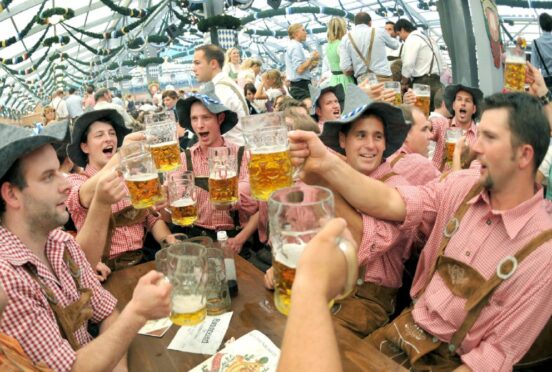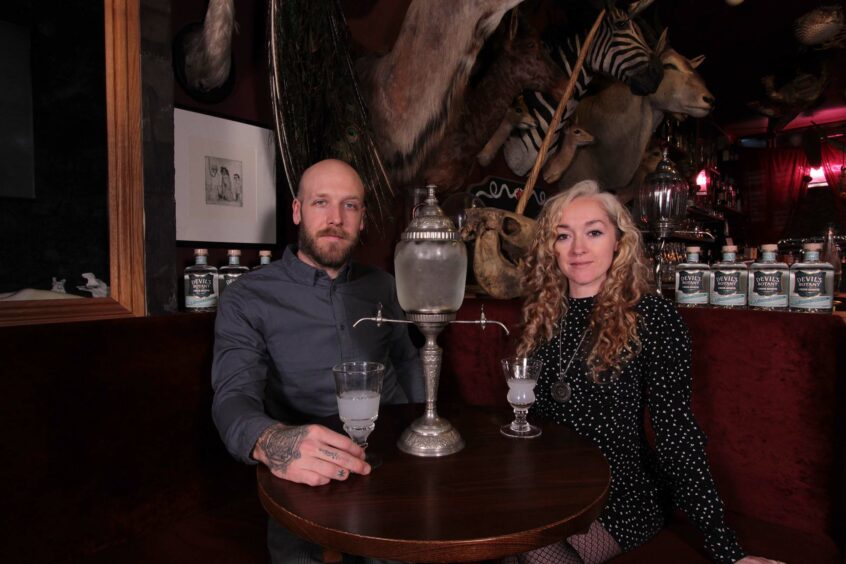
We say cheers to celebrate everything from new jobs and birthdays to weddings and new babies – but how much do you know about alcohol?
Here, Allison Crawbuck and Rhys Everett, authors of Spirits of the Otherworld, tell Alice Hinds the Honest Truth about our obsession with booze
What first made you interested in historical drinks and the magic of mixing cocktails?
After opening our absinthe parlour and cocktail bar in 2016, we became obsessed with hunting down curious tales and rendering them in liquid form. We found ourselves immersed within the weird and wonderful world of the Viktor Wynd Museum, and channelled so much inspiration in the collection for our menu over the years.
Is it true the earliest evidence of man-made alcohol can be traced back to a 10,000-year-old beer?
This is true. It turns out that mankind’s love of a great drink dates far back into our ancient history. Pre-dating the earliest civilisations, nomadic peoples would meet in primordial brewing sites to partake in the ancient ritual that is social drinking.
What is the most interesting or unusual fact you uncovered while researching your book?
One of our favourite tales in the book is of the ancient Greeks’ practical use for the magic of the semi-precious gemstone, amethyst. Coming from the Greek word, améthstos, meaning not intoxicated, it was believed that amulets made of this lustrous purple stone possessed the ability to prevent drunkenness. We know that the only way to truly prevent such a thing is abstinence, so to accompany this story we concocted a mocktail that is intoxicating only in its beauty.
Is the historical idea of mixing drinks as “otherworldly” the reason we call some alcohol “spirits”?
Distillation was once the sacred craft of alchemists and monks. Distilled spirits were known as aqua vitae – the water of life – and used for extracting and administering the hidden powers of nature. This process was once considered so sacred that the resulting liquors would become known simply as “spirits”.
What is your favourite cocktail, and what is its historical backstory?
It’s hard to choose just one, but on Halloween we enjoyed an Oak & Mistletoe. It is an Old Fashioned-styled cocktail celebrating the magical woodlands of the ancient Druids that once encompassed the Calvados producing regions of Normandy up to the whisky oasis of Scotland’s Highlands. The two spirits are enlivened by a spiced apple syrup to be served on the eve of Samhain, October 31, as the sun sets and the souls of the dead rise.
Who is Jabir ibn Hayyan, and why was he unknowingly the father of booze?
Jabir ibn Hayyan was an Arabic alchemist who is credited with inventing the early alchemical apparatus that inspired the copper alembics still used by most distilleries today. From his early distillations of low alcohols into hard liquors, such as wine into brandy, the history of distilled spirits was born. Spirits would not exist were it not for the art of alchemy!
How did the Renaissance, and discovering more of the world, change what we drink?
The global explorations of the Renaissance unleashed new worlds of flavour, mysticism and magic. Drinking rituals were discovered to be an innate part of our human nature, existing in all corners of the world unbeknownst to one another. Sugar cane brought over to the Americas, for example, would spark the Caribbean’s rum production and when explorers first returned back to Europe with corn, its sweet flavour would forever change the production of whisky.
Do we still practice any ancient drinking rituals today?
Humans have joined together to toast to the delectable wonders of nature since the dawn of our existence and social gatherings have been enlivened by alcohol all along.
Spirits of the Otherworld: A Grimoire of Occult Cocktails and Drinking Rituals is out now

Enjoy the convenience of having The Sunday Post delivered as a digital ePaper straight to your smartphone, tablet or computer.
Subscribe for only £5.49 a month and enjoy all the benefits of the printed paper as a digital replica.
Subscribe